There are a number of ways to get started to develop with ArcGIS Maps SDK for Kotlin. If you are new, follow the steps below to get started with Kotlin and Android Studio.
1. Sign up for an account
To use ArcGIS Maps SDK for Kotlin to access content, services, or an organization, you need an ArcGIS Location Platform account, ArcGIS Online account, or ArcGIS Enterprise account. The type of account, user type, and role you need depends on the resource you need to access and the operations you wish to undertake.
If you do not have an account, select one of the options below:
2. Get the SDK and dependencies
To use the ArcGIS Maps SDK for Kotlin, install Android Studio, install the JDK used by Gradle, and get the ArcGIS Maps SDK for Kotlin and its dependencies.
Install an Android IDE with Gradle integrated.
The official IDE for Android app development is Android Studio, which can be installed as follows.
-
Check the Android Studio system requirements for your operating system, architecture, and version.
-
Download Android Studio.
You should install the latest stable version of Android Studio.
-
Run the installation file, following instructions in the Android Studio Setup wizard.
Install the JDK used by Gradle
Installing Android Studio automatically installs an embedded version of the JDK, normally in a subdirectory named jbr. Gradle, however, uses its own JVM when starting the Gradle daemon. If these two versions of the JVM are not the same, Gradle may spawn extra deamons, which can slow down builds.
You should manually set the JDK that Gradle uses and make sure the embedded JDK and the Gradle JDK are the same version.
-
On the file system of your development machine, go to the
jbrdirectory underneath the Android Studio installation. Open thereleasefile and find the value of the JAVA_VERSION environment variable.That is the embedded JDK that Android Studio is using.
-
In Android Studio, access the Settings (Windows) or Preferences (macOS) dialog from the File menu.
-
Click Build, Execution, Deployment > Build Tools > Gradle.
-
In the Gradle JDK field, select a JDK that has the same version as the embedded JDK.
Get the ArcGIS Maps SDK for Kotlin and dependencies
- Expand the accordion below: Gradle build script and Gradle version catalog. These files come from the Display a map tutorial.
- Copy the expanded contents of each into the corresponding file in your project.
build.gradle.kts (->Module : app) <your-project-name>/app/build.gradle.kts libs.versions.toml-><your-project-name>/gradle/libs.versions.toml
- Click the Sync Project with Gradle Files button to download and unpack the API, its resources, and all dependencies.
For additional considerations, go to Install and set up.
// ArcGIS Maps for Kotlin - SDK dependency
implementation(libs.arcgis.maps.kotlin)
// Toolkit dependencies
implementation(platform(libs.arcgis.maps.kotlin.toolkit.bom))
implementation(libs.arcgis.maps.kotlin.toolkit.geoview.compose)
// Additional modules from Toolkit, if needed, such as:
// implementation(libs.arcgis.maps.kotlin.toolkit.authentication)
The highlights above indicate lines that we are adding to the default build.gradle.kts ( and gradle/libs.versions.toml generated by the Android Studio New Project Wizard.
The first time you build a project, the Gradle build script will automatically download the ArcGIS Maps SDK for Kotlin and its resources to your development machine. Your Android Studio project will then access the Kotlin Maps SDK with no further action on your part.
3. Get an access token
To access secure ArcGIS services and resources, you need to use an access token. The easiest way to get started is to obtain an access token from an API Key. Learn more about access tokens and authentication in Security and authentication.
4. Create your first mapping application
Follow the step-by-step instructions in the Display a map tutorial to create your first mapping application. The following code shows how you can create and display a map.
@Composable
fun MainScreen() {
val map = remember {
createMap()
}
Scaffold(
topBar = { TopAppBar(title = { Text(text = stringResource(id = R.string.app_name)) }) }
) {
MapView(
modifier = Modifier.fillMaxSize().padding(it),
arcGISMap = map
)
}
}
fun createMap(): ArcGISMap {
return ArcGISMap(BasemapStyle.ArcGISTopographic).apply {
initialViewpoint = Viewpoint(
latitude = 34.0270,
longitude = -118.8050,
scale = 72000.0
)
}
}Once you are done building your application, make sure to license it before deploying to production. For more information, see License and deployment topic for details.
5. Follow the tutorials
Go to the tutorials to create and run applications to perform different operations.
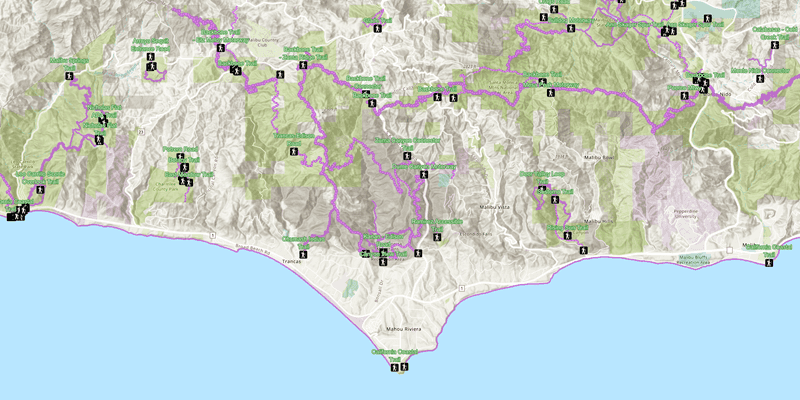
Display a web map
Display a preauthored map stored as an ArcGIS Online portal item.
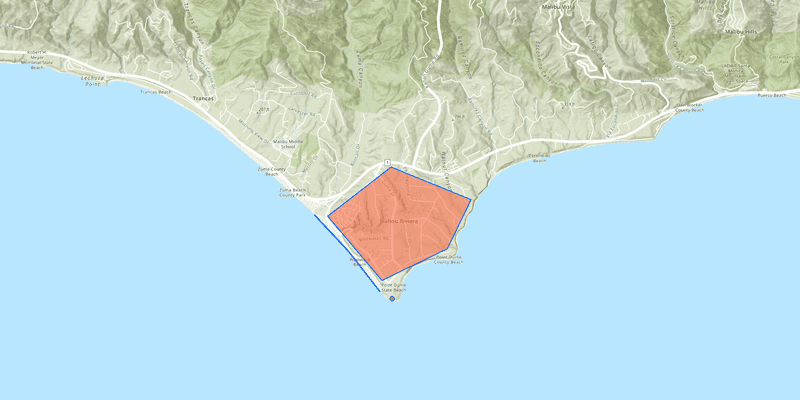
Add a point, line, and polygon
Learn how to display a point, line, and polygon graphic in a map.
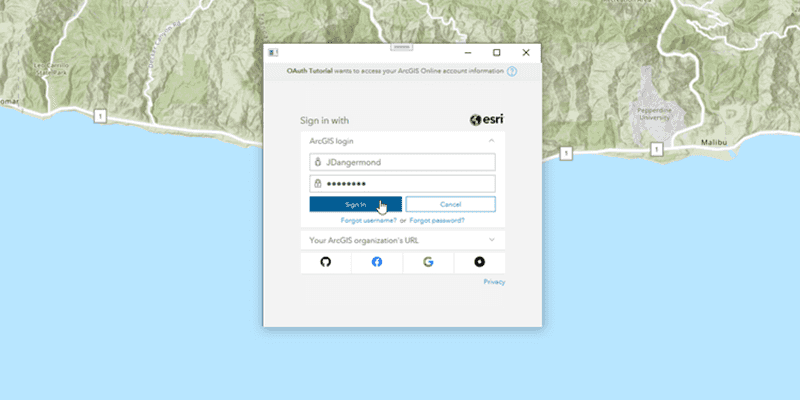
Access services with OAuth credentials
Learn how to implement user authentication to access a secure ArcGIS service with OAuth credentials.
6. Explore the samples
Go to the samples to learn how to perform more tasks with the API.
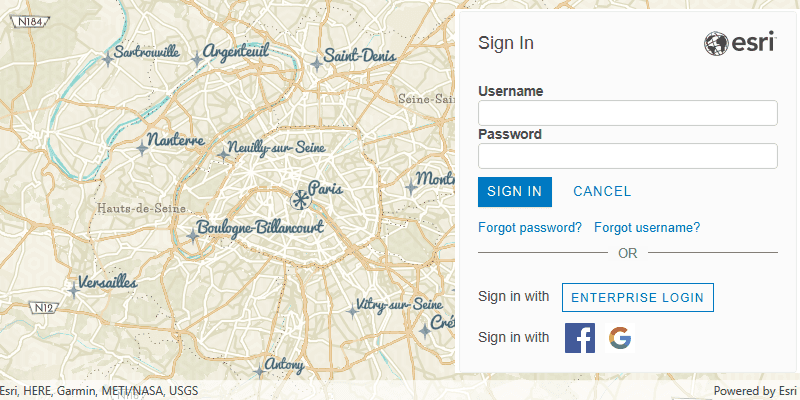
Authenticate with OAuth
Authenticate with ArcGIS Online (or ArcGIS Enterprise) using OAuth2 to access secured resources.

Query feature table
Find features in a feature table which match an SQL query.
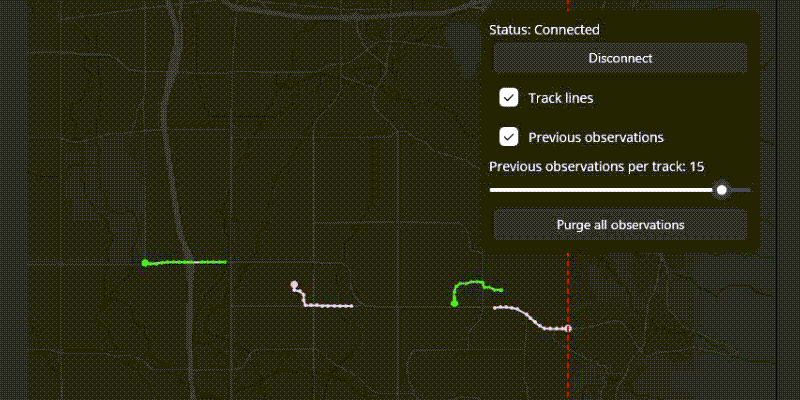
Add dynamic entity layer
Display data from an ArcGIS stream service using a dynamic entity layer.
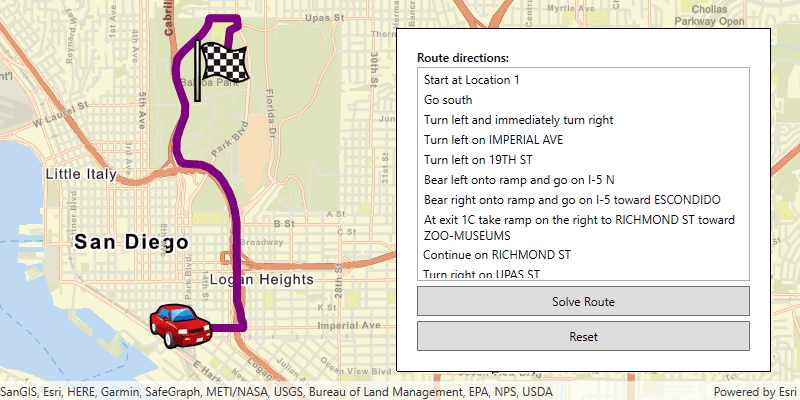
Find route
Display directions for a route between two points.